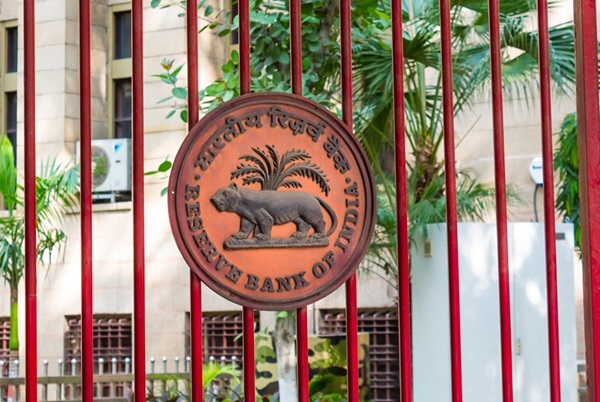.png)

Kalyan Ram, a financial journalist, co-founded Cogencis and now leads BasisPoint Insight.
March 6, 2025 at 4:11 AM IST
The Reserve Bank of India has unveiled a sweeping liquidity boost after discovering — somewhat predictably — that its February rate cut drifted past markets like a memo no one bothered to read. Instead of easing, market yields inched higher, a reminder that the price of money — interest rates — rarely budges without an adequate supply of it.
The latest measures are a quiet admission that the system needed more than a symbolic gesture. Without sufficient liquidity, the rate cut was always going to struggle to make itself heard.
Liquidity has been a persistent headache, worsened by advance tax outflows, rising cash in circulation, and the RBI’s own currency interventions. The central bank was slow to react, letting overnight rates drift uncomfortably higher. The ₹1 trillion open market operations plan, split into two rounds in March, leaves little doubt that the RBI is now scrambling to catch up.
With further advance tax payments looming and seasonal pressures tightening liquidity, these purchases offer much-needed relief — if somewhat later than markets would have liked.
The FX swap, meanwhile, adds another layer to the RBI’s strategy. The $10 billion dollar-rupee buy-sell swap — the second this month — serves a dual purpose. It injects rupee liquidity and subtly rebuilds foreign exchange reserves without jolting currency markets.
For weeks, the market debated whether the RBI would lean on bond purchases or cut the cash reserve ratio to ease funding pressures. The central bank ultimately chose a playbook that serves multiple objectives — adding liquidity while boosting reserves — a familiar balancing act whenever the RBI finds itself managing domestic liquidity and external stability at the same time.
This two-pronged approach — durable liquidity from OMOs and tactical rupee liquidity via FX swaps — is a marked departure from the passive stance the RBI leaned on through much of 2023 and 2024.
For most of that period, the central bank preferred to let short-term rates drift above the policy rate, with 14-day VRRs acting as the centrepiece of liquidity management. That framework was supposed to impose discipline, foster a term structure for rates, and preserve flexibility. What it actually delivered was arguably less refined. Traders found it expensive to hold positions, while overnight volatility spiked as banks scrambled to cover mismatches.
With March pressures mounting and cash leakage still elevated (and some say Kumbh Mela may have worsened it), the shift to direct intervention speaks volumes. OMOs deliver predictable cash infusions — something 14-day VRRs, by design, cannot offer. OMOs also fit better with the RBI’s growing view that liquidity management needs to be clearer, more visible, and less prone to misinterpretation.
Tactical Twist
The structure of these moves signals a quiet rethink of RBI’s operational approach. The preference for finely-tuned term repos has given way to more visible, decisive interventions. OMOs and FX swaps, while less elegant on paper, leave fewer gaps for the market to misread.
What changed?
Management churn at the RBI has opened the door to a broader reassessment of liquidity management itself. The rigid focus on term repos, some argue, introduced unnecessary distortions, made it costly to hold positions, and gradually drained market depth.
While the FX swaps shore up the foreign exchange reserves, the bond purchases by the RBI will also boost its balance sheet. A very strong motivation for OMOs is RBI balance sheet growth as this aspect has not kept pace.
Separately, reintroducing OMOs may inject some of the much-needed momentum into the bond market. Tight liquidity and flat yields have given traders little reason to take meaningful positions.
OMOs could go some way in restoring demand-supply balance, which will only become more critical when the government launches its new borrowing programme of around ₹14.8 trillion next month.
The FX swap adds its own quiet value. Beyond the immediate rupee liquidity, it allows the RBI to discreetly rebuild reserves without the spectacle of large-scale spot interventions. While India’s reserves remain healthy, global risks — from shifting Federal Reserve policy to persistent geopolitical unease — make the RBI’s desire for a thicker buffer entirely rational.
It also helps, of course, that the swap eases some of the expected tax-season liquidity pain. With both advance tax payments and GST settlements colliding in March, liquidity was always set to tighten. But the need for a liquidity infusion runs even deeper. The RBI’s forward dollar sales from previous interventions — if not rolled over — will themselves drain rupee liquidity when they mature. That looming drag made some form of durable infusion less optional and more inevitable.
By pairing OMOs with FX swaps, the RBI gives itself a flexible, multi-pronged toolkit to manage these overlapping pressures without sending confusing signals about its broader stance.
Policy Pivot
Markets will welcome the shift. Bond yields should ease, funding conditions will improve, and equity markets will likely spin the liquidity boost into a broader pro-growth narrative. But the bigger question is where the RBI goes from here.
All eyes will now turn to the April policy review. A CRR cut — long speculated — could easily follow if liquidity conditions remain uncomfortably tight. Another rate cut is also on the table.
A shift to an ‘accommodative’ stance will be increasingly debated. But much will depend on how far the Federal Reserve’s evolving stance influences the narrative at home, particularly in terms of capital flows and exchange rate management.
While markets will cheer the immediate liquidity boost, broader transmission — particularly to bank lending rates — is unlikely to materialise this month. Most banks will hold off on any meaningful recalibration of their lending strategies until the April policy offers greater clarity on the RBI’s medium-term stance.
One could argue that the RBI’s approach to inflation targeting is evolving, though perhaps more out of circumstance than by design. With inflation drifting closer to 4%, the February rate cut may have been more about seizing an opening than signalling any deliberate shift in strategy. Still, operating comfortably within the flexible 2-6% band allows the central bank to lean on the room the framework provides, even if it hasn’t formally redefined its inflation philosophy.
Whether this reflects a true recalibration or merely tactical flexibility remains unclear. Clinging too tightly to the 4% mark has always risked leaving the RBI boxed in, especially when global supply shocks and unpredictable commodity prices frequently cloud the inflation outlook. By using the built-in flexibility of the range, the RBI can create space for liquidity management and growth-friendly measures — without openly appearing to dilute its inflation mandate.
How far this flexibility can stretch — and whether it represents a sustained policy shift — will depend largely on how the coming months play out. If inflation holds steady and liquidity stabilises, this approach could evolve into a more deliberate framework. But if liquidity tightness resurfaces or inflation pressures reassert themselves, March’s interventions risk being remembered as just another tactical patch, not the start of any meaningful rethink.
Ultimately, the February rate cut may be remembered not for what it achieved, but for what it revealed. Without the right liquidity conditions, a rate cut is just an announcement — easily ignored, quickly forgotten. It’s taken a trillion-rupee OMO plan and a pair of FX swaps to make that point crystal clear.




